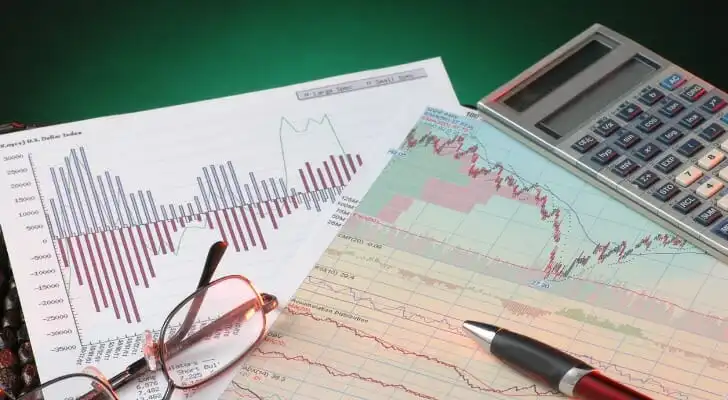Morningstar ratings are a system for evaluating the strength of an investment based on how it has performed in the past. On a scale of one to five stars, a Morningstar rating measures investments based on backward-looking data. The more stars, the better a fund or stock’s historic returns. If you have questions about Morningstar ratings, specific stocks or investing in general, a financial advisor who serves your area might be able to help.
What Is Morningstar?
Morningstar is a leading provider of independent investment research, widely recognized for its comprehensive analysis and ratings of mutual funds, stocks, and other financial products. Founded in 1984, the company has grown to become a trusted resource for both individual investors and financial professionals. Morningstar’s mission is to empower investors by providing them with the tools and information necessary to make informed financial decisions. The company’s research and insights are utilized by millions of people worldwide, making it a cornerstone in the investment community.
One of Morningstar’s most well-known offerings is its star rating system, which evaluates mutual funds based on their historical performance relative to peers. The ratings range from one to five stars, with five stars indicating a fund that has performed exceptionally well compared to similar investments. This system helps investors quickly assess the quality of a fund, though it’s important to remember that past performance is not always indicative of future results.
It updates monthly, providing investors with a quantitative way of judging their decisions. It primarily evaluates the performance of funds. While many systems rate and rank investments, Morningstar ratings have become the most widely cited and influential in the world. There are two forms of Morningstar ratings:
- The star system: The star system rates funds on a scale from one to five stars. It ranks funds based on their past performance, with five stars meaning that a fund has historically posted the largest returns. These ratings are updated at the end of every month. The star system is purely backward-looking. This is the most widely referenced form of Morningstar ratings.
- The medal system: Morningstar also provides Analyst Ratings and Quantitative Ratings. Both of these systems rate funds on a scale of Gold, Silver, Bronze, Neutral and Negative. In both cases, the medal system is a forward-looking assessment of how Morningstar believes a fund will perform in the future. The better the ranking, the more likely Morningstar feels it is that the fund will outperform the market. The analyst ratings make this judgment based on the opinion of Morningstar analysts. The quantitative ratings make this judgment based on statistical models.
Morningstar is an invaluable resource for investors and financial advisors alike, offering a wealth of information and tools to support sound investment decisions. Whether you’re a beginner looking to understand the basics or a professional seeking detailed analysis, Morningstar provides the insights needed to navigate the complex world of investing with confidence.
What Morningstar Ratings Mean

Morningstar rates funds against each other. This means that a five-star rating is not necessarily an objective statement about a fund’s strength. Rather it means that the fund has historically performed better relative to similarly situated investments.
The rating system determines whether two funds are similarly situated based on two metrics: the category of the fund and the risk involved. Two funds are considered peers when Morningstar places them in the same category, and the returns of any two peer funds are evaluated based on the degree of risk that the fund assumes. Safer funds that generate higher returns are considered stronger investments than more risky funds generating a comparable return.
Morningstar categories include several different points of reference, including:
- Size of assets in the fund, such as large value/small value; large blend/small blend; and market capitalization.
- Industry of assets in the fund, such as funds that focus on industrials, real estate, technology or other investments.
- Geographic regions of the fund, such as funds that invest in certain regions or municipal bonds focused on certain states.
Typically funds will be listed under several broader and more narrow categories, allowing investors to compare them among several different types of investments.
How to Use Morningstar Ratings
Morningstar Ratings are most effective when comparing funds within the same category. Try to understand what the ratings are saying and measuring before jumping in and using them for your benefit.
Star Rated Investments
A fund with a high star rating has historically outperformed other funds investing in the same category of assets with comparable levels of risk. This is a historic-looking measurement.
This means that investors using star ratings should do so based on evaluating past performance. A high star rating means that under comparable conditions, investors might expect comparable performance. However, as an investor, you should carefully review market conditions before you judge what to expect moving forward.
For example, an investor might decide that a specific industry is poised for growth in the coming year. In that situation, they might use a Morningstar rating to find funds that have historically outperformed their peers in their space.
Analysis Ratings
Morningstar’s Analyst Ratings and Quantitative Ratings ideally provide prospective advice. These ratings judge the funds that Morningstar feels are most likely to outperform similarly situated funds going forward. Like with the star ratings, though, the analysis ratings are entirely subjective. A gold rating does not necessarily mean that the fund will perform well by objective measures; just that it will do better than other funds that hold similar assets with similar degrees of risk.
In particular, investors should exercise caution when using Morningstar’s analysis ratings. As with all investment advice, this is based on the firm’s best judgment. As a result, there are no guarantees that well-rated funds will necessarily outperform their peers, no less the market. Meanwhile, as with Morningstar’s star ratings, investors should often use the ratings as one part of their larger toolkit.
While Morningstar Ratings can be a helpful component of your investment strategy, they should not be the sole factor in your decision-making process. Consider them as one piece of the puzzle. It’s important to conduct a comprehensive analysis that includes reviewing a fund’s prospectus, understanding its investment philosophy, and assessing its alignment with your financial goals.
Bottom Line

Understanding how to read and use Morningstar ratings can significantly enhance your investment strategy. These ratings provide a quick snapshot of a fund’s past performance, adjusted for risk and costs, which can help investors make informed decisions. However, it’s crucial to remember that these ratings are not predictions of future performance but rather a reflection of historical data. By examining the star ratings, investors can compare funds within the same category, gaining insights into how a fund has performed relative to its peers.
Investment Tips
- Want to talk to someone about the right funds for your own portfolio? Consider speaking with a financial advisor. Finding a financial advisor doesn’t have to be hard. SmartAsset’s free tool matches you with vetted financial advisors who serve your area, and you can have a free introductory call with your advisor matches to decide which one you feel is right for you. If you’re ready to find an advisor who can help you achieve your financial goals, get started now.
- Morningstar ratings aren’t the only such fund ratings available. If you would like to compare alternatives, consider looking into the alternative Lipper system.
Photo credit: ©iStock.com/Darren415, ©iStock.com/choicegraphx, ©iStock.com/photofriday
